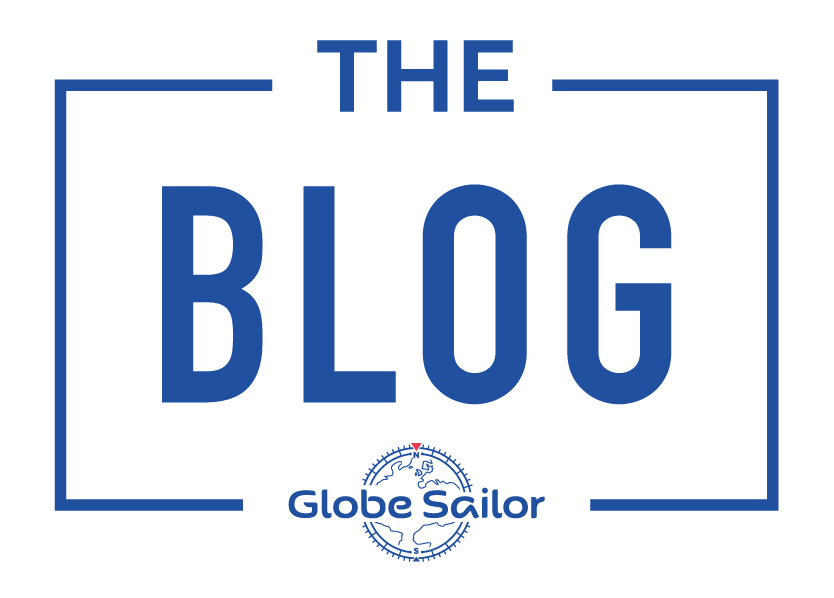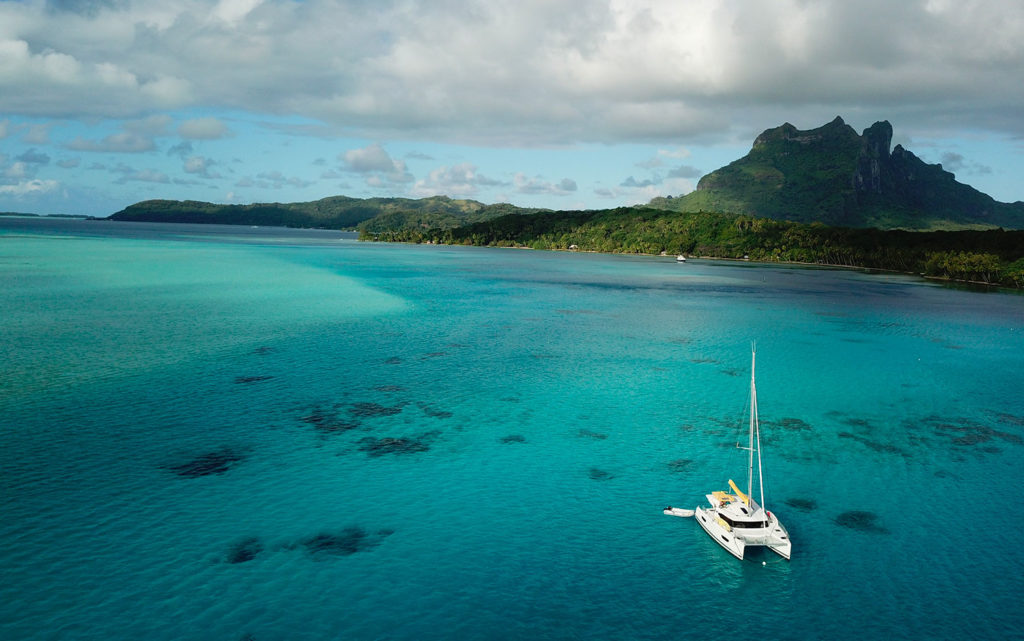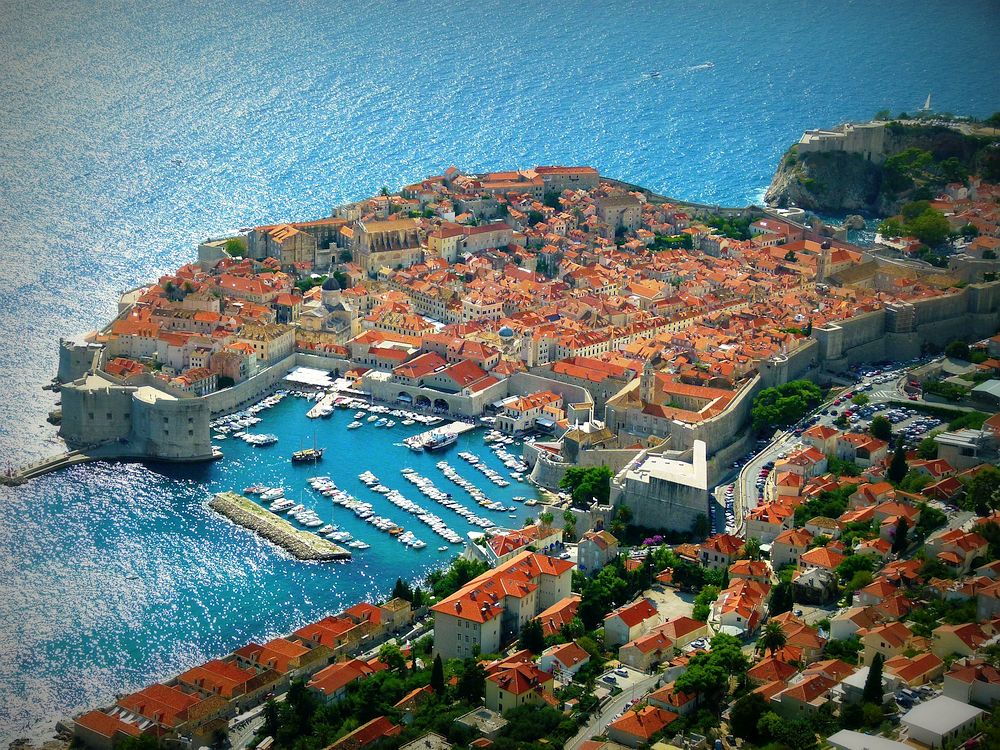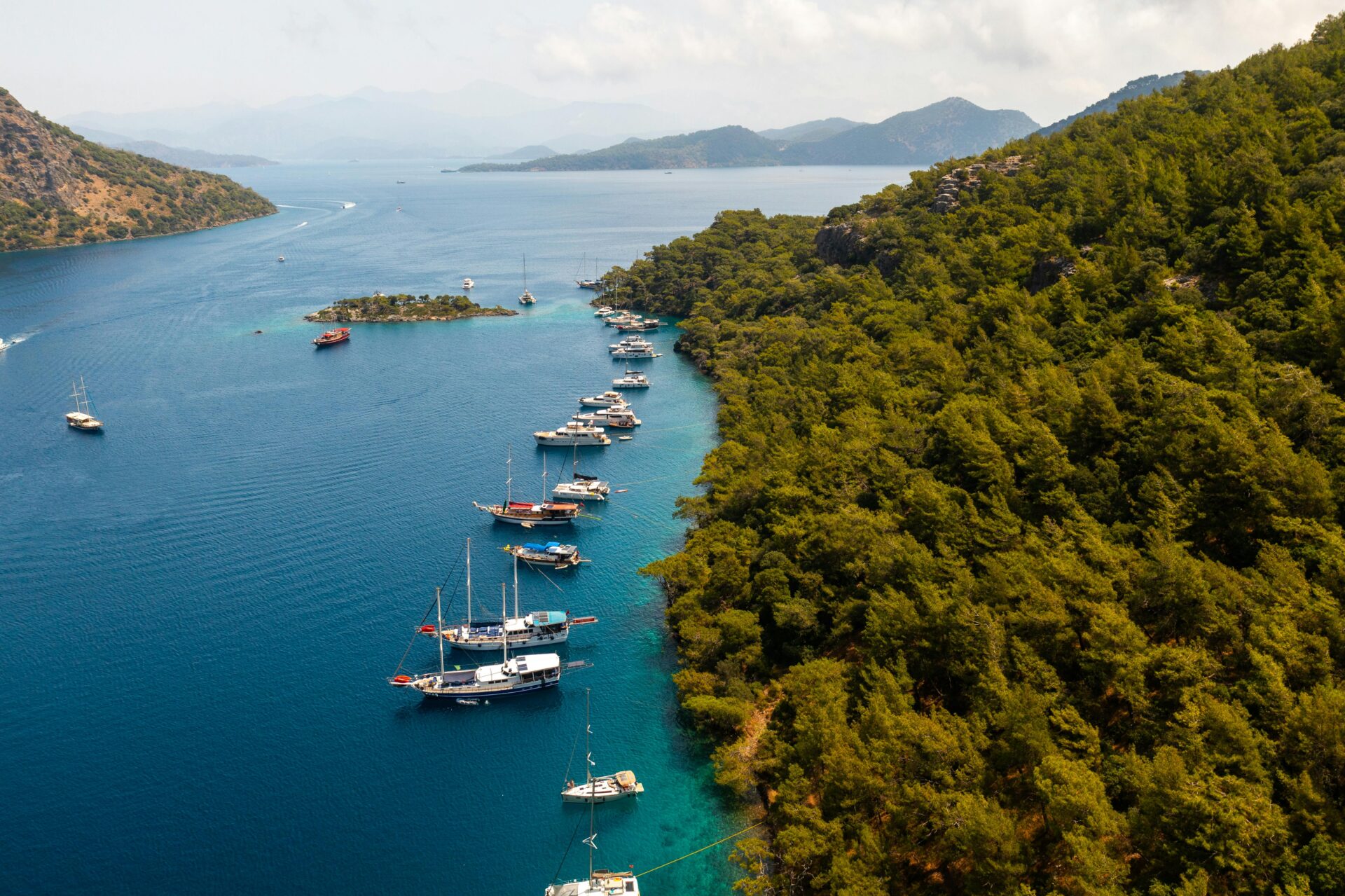With fall approaching, the seasonal blues are setting in. To stop the grey ideas, take a trip in the sun! 3, 2, 1… You’ll be dreaming of the brilliant blue of the Polynesian atolls, the Tahitian flowers draped around your neck, and the rhythmic melodies of the Ori Tahiti. Our cabin cruising expert Clémence had the chance to sail in Polynesia, so she’s going to give you the rundown on why it’s the perfect time to take the trip of a lifetime!
Practical Info





CAN YOU DESCRIBE THE POLYNESIAN ARCHIPELAGO?

French Polynesia is a set of islands so fragmented in the middle of the Pacific Ocean that the archipelago is the size of the European Union! It’s possible to sail in many of the different atolls: The Leeward Islands (Bora-Bora, Huahine, Raïatea...), the Marquesas, or the Tuamotu further north.
It isn’t possible to visit all the islands in one trip unless you’ve cleared the next 6 months! For example, it takes 14 days to sail from Tahiti to the Marquesas Islands. My advice: if you plan for 10 days of sailing in Polynesia, it’s better to fly to your departure base so you can make the most of your cruise time and stopovers.
Here, we’ve chosen to explore the Leeward Islands from Raiatea.
LEEWARD ISLANDS: FOR SAILOR'S WITH WHICH EXPERIENCE LEVEL?
With fairly strong winds and not always the steadiest waters, yacht charter in Polynesia is better for skilled sailors. It’s necessary to know how to sail with a few big gusts and changing winds. Each island is surrounded by a coral reef, but there are precise passages to bypass them. These are well indicated on the maps provided by our renter.
For those who prefer to leave it up to a professional skipper, you can opt to sail with a crew or do a combined land and sea excursion in Polynesia.
12 DAY COMBINED LAND & SEA EXCURSION (9 DAYS OF SAILING)
DAY 1
Departure from your chosen city and arrival at Tahiti airport! Our rental partner welcomes us, and we spend our first night in a guesthouse near the airport.
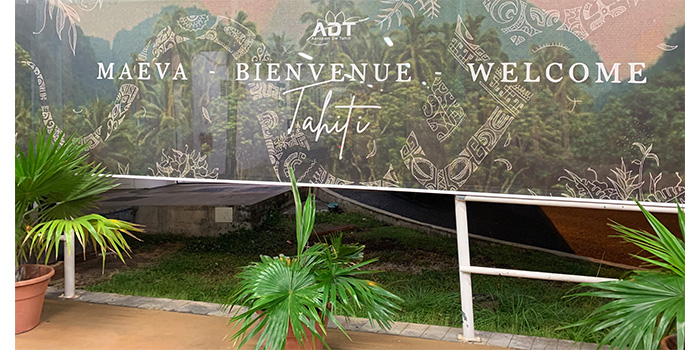
DAY 2
We take the opportunity while we’re in Tahiti to visit Papeete. Things to see: the market and the promenade in front of the port (it’s a bit like the English Promenade of Nice). There’s not much more to do in Papeete itself, but it’s usually the obligatory "stopover" to be able to get to Huahine. Flights are not very frequent; it’s necessary to schedule your arrival with the departures of the planes. Ours was at 4:30 p.m.
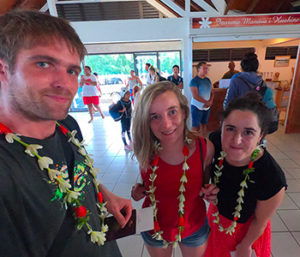
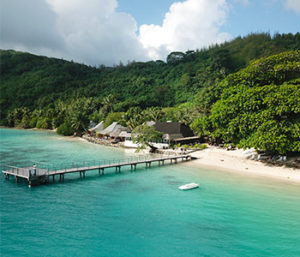

We then took the flight for Huahine (only 15 minutes). We arrived in time for the sunset at the Hotel Le Mahana, which was organized by our partner renter. The sun sets early and rises early in this season (autumn).
DAY 3
Still getting used to the time difference, we’re woken up early to take advantage of the kayaks available from the hotel to see the sunrise from the water.
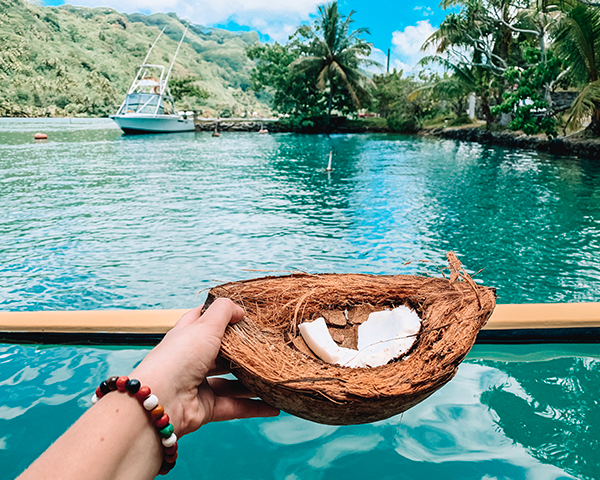
In today’s itinerary: departure at 9 a.m. for the "earth and lagoon" excursion, proposed as a supplementary activity by the hotel. You can take a quad, bicycle, or car to visit the "big" city in Huahine, called Fare. The "land" part includes visiting a vanilla plantation and archeological sites. We also fed some sacred blue-eyed eels with children of the island.
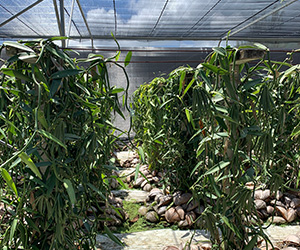
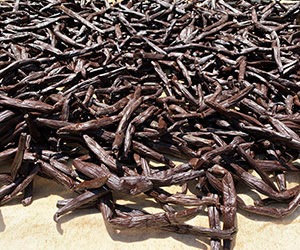
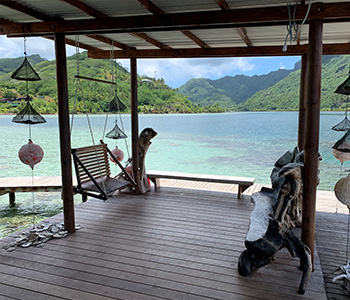

For the "lagoon" part of the day, we took a Polynesian canoe (with a motor) to visit a pearl farm. We finished the morning on a private motu islet with a demonstration of Polynesian dance and the preparation of a meal (chicken, coconut, rice). Later, we headed back to the hotel to rest and then finally went on to happy hour!
Price of the excursion: Approximately $140 per person
DAY 4
Our rental company transports its boats to Huahine daily, so in the morning we relax at the hotel while we wait for the boat. We have lunch at the hotel restaurant—a delicious meal for the right price. At 2 p.m., we see our Lucia 40 arriving at the end of the pontoon, a superb catamaran which will be our accommodation for the rest of the trip.
The handling of the catamaran is done by Maric, a Breton from Brest. He took the time to explain everything to Emeric, our skipper and expert GlobeSailor of Croatia and Polynesia. Maric makes us a list of things to do and see during our stopovers. Initially, we set sail with Maric to reach the bay of Bourayne.
The motto of our rental partner: a cruise with a good crew is a successful cruise. Therefore, they are very attentive to the quality of the services offered to their customers. Once there, Maric advised us to go to a specific snorkeling spot before 9 a.m. Why before 9 a.m.? After this, the spot is invaded by tourists because it’s an excursion offered by the hotels. We were extremely happy to be in a boat and to be able to enjoy natural spots like this without the disruption of other tourists!
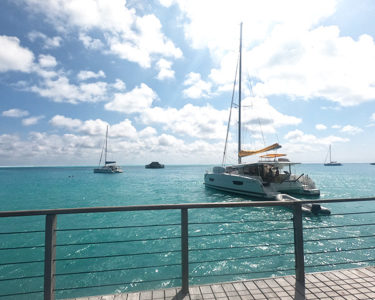
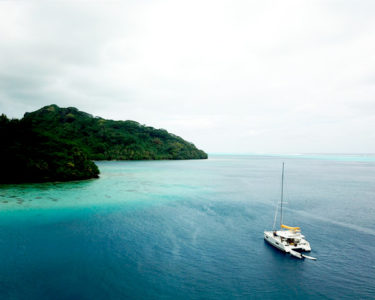
DAY 5
Wake up at 6:30 a.m. We quickly get into the Polynesian rhythm of life: they get up early and go to bed early. They live with the sun! After our breakfast, we take the dinghy to a famous snorkeling spot. It’s a small islet, which is at the mouth of Bourayne bay. Once again, it’s best to go before 9 a.m. It’s a real-life aquarium, and not deep at all. We can see fish even when the water is only at knee level!


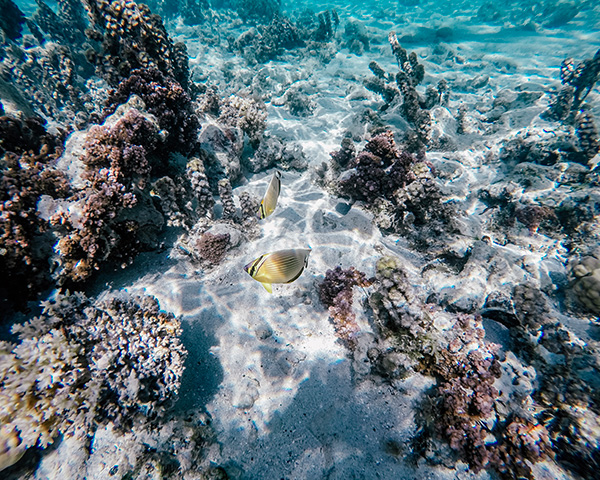
We return to the boat for one last coffee, then hop back in the dinghy to go to the beach of Hanahiti, which is right in front of our anchorage. The film The Princes of the Pacific was shot here. On the beach, we found an old man who introduces himself as the guardian of the beach and the bay. At night, he watches the boats at the anchorage to make sure they respect the surrounding nature (no black water discharge, no throwing fruit and vegetable peels overboard...). If boaters don’t respect this, dinghies disappear (or they’re detached, and you’ll find them at the other end of the bay!). During the day, he is an ocean guard, even though it’s not a real job! He simply declares himself so. But he loves this beach and his island so much that he comes every day to clean it and welcome the boaters that come here. There are usually other Polynesians who come to keep him company also. Not only does he watch over the beach, he also showed us a "hiking" path to get to the top of a hill where the view is completely breathtaking. A few years ago, there was a hotel on this part of the island, a luxurious 5-star resort with huts in the trees. It was destroyed by a tornado in 1998. During the trip, you can see the structures of the remains, making it possible to grasp the sheer size of what it once was.
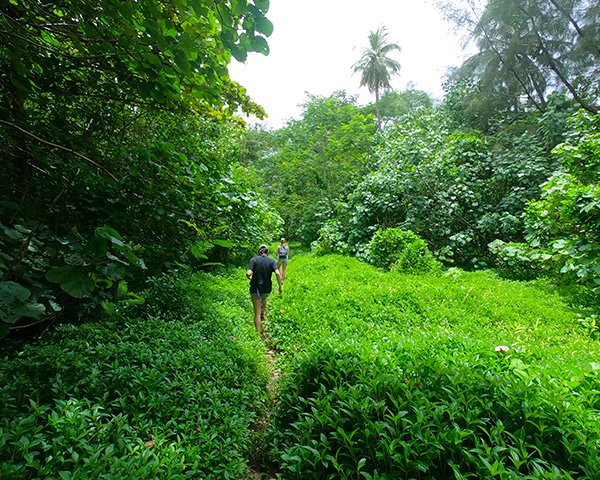

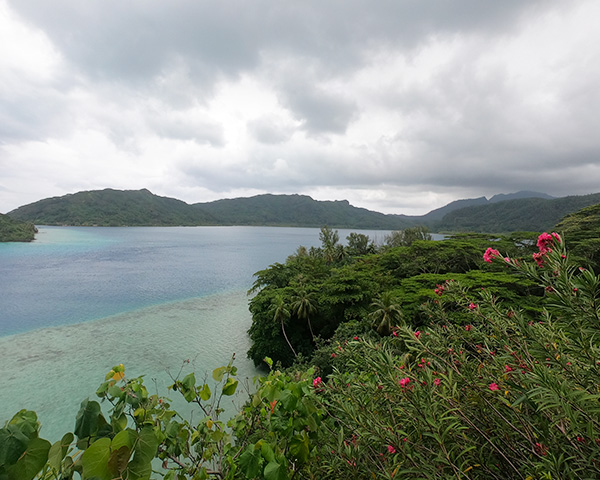
Once again, we take to the sea, this time around 3:40 p.m. to get to Fare. We faced a little bit of rain along the way, but it passed quickly. After 40 minutes of sailing, we arrive at Fare. It’s necessary to be very careful where we throw the anchor: there are corals everywhere, and we must avoid the anchor damaging this protected species. A Polynesian in a dinghy comes to check that our anchor is placed well, and if it isn’t, he asks the boaters to find another place and retry. After anchoring, we find a food truck and eat ashore. The dishes are copious and inexpensive, and many of the recipes are based on chicken or raw fish.
DAY 6
Departure from Fare at 7:30 a.m. to reach Raiatea. 5 hours of sailing later, we arrive to our new spot at 12:40 p.m. We anchor in front of the base of our rental partner to meet Raiatea's team. We discover a small marina filled with catamarans, as most of the rentals leave from here. We rent a car (approximately $60 for a day and a half), as it's the easiest way to visit Raiatea. We shop for some boat provisions and then take a mini road trip across the island. The landscapes alternate between sea and jungle.
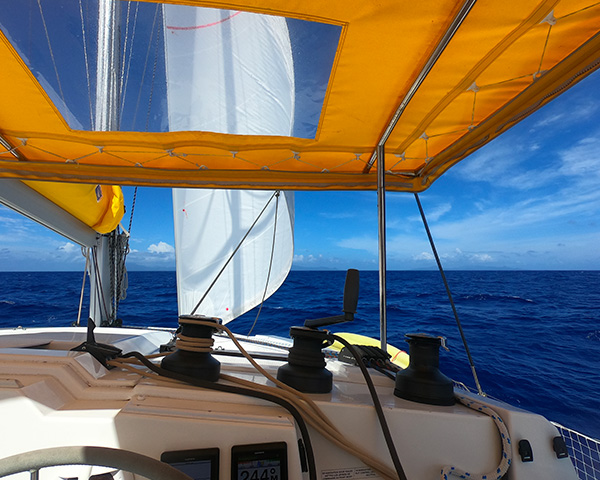

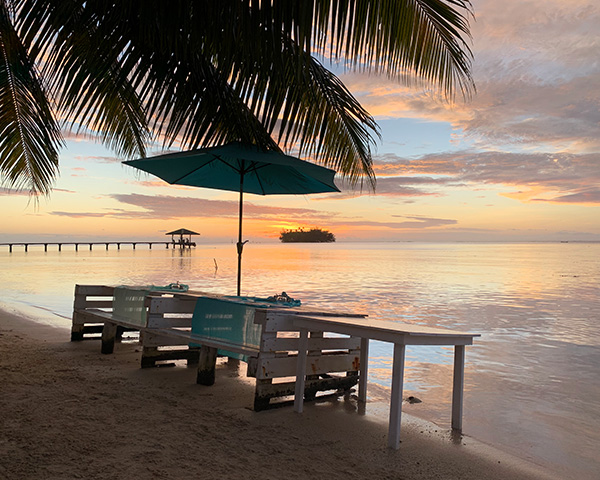
During the sunset, we have a drink at the Fish&Blue, which was recommended by our renter. It’s an absolutely splendid place right on the beach. Here, we had a drink in one hand and our feet in the water! We spent the night on the boat, anchored in front of the base.
DAY 7
We leave Raiatea and sail for about 40 minutes before reaching the bay of Apu. We visit the pearl farm of the Champon family, who are well-known for the pearls they produce. This was even better than the first one that we visited, simply because the reception was incredibly nice, although pearls are still rather expensive…
Now, we head towards the bay of FA'A'AHA for another anchorage. We were supposed to visit a vanilla plantation, but we stay on board due to the stormy weather. This bay is a change of scenery, as it’s very green, almost like a jungle. Even the water is green—a beautiful green which is reflected throughout the surrounding landscape.
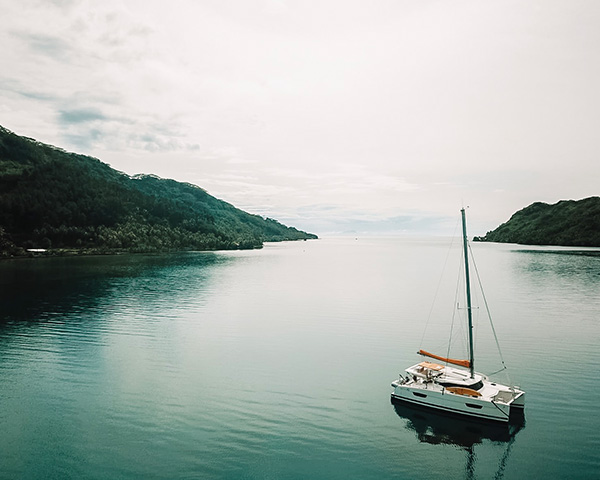
DAY 8
One rainy night in Ares, we disembark to visit Brian and Moeata's vanilla farm. Contrary to our previous visit to Huahine, vanilla flowers are not grown in greenhouses here, but rather in nature. They also have a plantation where they make Tamanu oil, a great remedy for burns, mosquito bites, and other insect bites.



Underway again by 11 a.m. to reach Faaroa Bay. This bay is the meeting between sea and river. We go up via kayak and paddleboard. At first, we take the right arm of the river. We reach a dead end and come across a "dwelling." A couple lives on the muddy ground with pieces of sheet metal as a house. Their livelihood is based on cultivating fruits and vegetables. One offers us a coconut and then opens it right in front of our eyes! They seemed happy to live here, where the definition of "living with love and fresh water" clearly applies. We then set out again on the opposite path to discover the left branch of the river. Breathtaking scenery surrounds us: now we're in the jungle, where obviously it rains, so we try to take full advantage of it to become adventurers like Lara Croft! We spent the night anchored in front of the river.
DAY 9
We leave around 9 a.m. to anchor in the bay of Opoa. Facing the sea, there is the Marae Taputapuetea, which is an ancient place of worship in Polynesia. We visited on foot, then sailed to anchor in front of the private islet Naonao, where a natural aquarium surrounds the boat, complete with pieces of coral like cracked rocks. We can see the fish here quite easily.
*NB: an islet is always private. It is difficult to buy an islet here because they are transmitted from generation to generation. Namely that in Polynesia, there is no inheritance tax. This makes it easier for an islet to stay in a family.
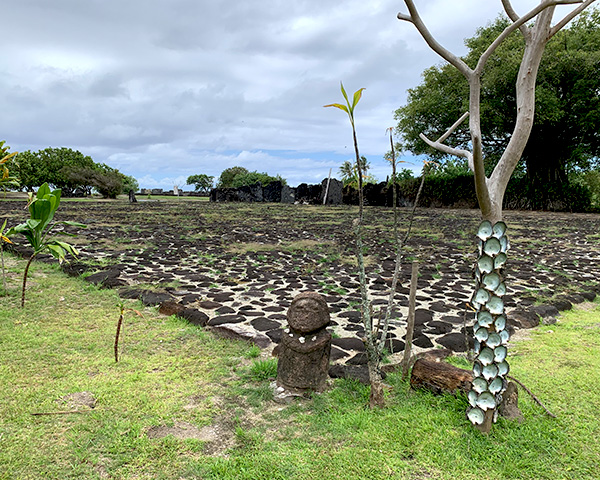



Polynesians live here, sometimes only the grandparents, and the rest of the family join them on weekends (nice as a second home!). Or if the islet is not far from an island where people work, they take a canoe to the "office"—traffic is never a problem!

DAY 10
Departure at 6 a.m. from the islet. 7 hours of sailing later, we arrive in Bora Bora. Our first anchorage is behind Toopua, another islet. We take the dinghy back to the clearest and sandiest part of the lagoon, where we swim with black tip sharks and rays.
With the hotel packages, it’s about a $100 additional fee, whereas the advantage of the boat is to be able to go there for free!
DAY 11
We set course for the east coast of the island. After 2 hours of sailing, we anchor in front of Motu Piti Aau. The water is so clear we see the rays swimming on the bottom. In the middle of the afternoon, we take the dinghy to a coral garden, where we obviously swim amongst the fish. Then we ate dinner in a restaurant right in front of the water. At sundown, we can see black tip sharks at the edge of the water. They’re so close to the surface—only our ankles are covered, and they’re still swimming right by us!
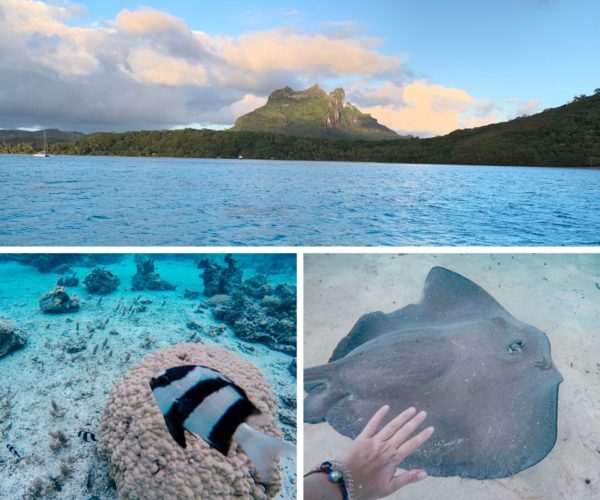
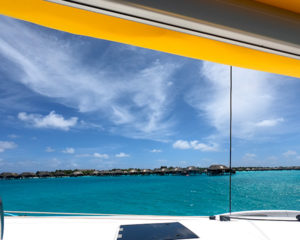
DAY 12
It will take us 8 hours of sailing to reach Raiatea. Tonight is our last night at anchor before returning the boat the next day. If your return flight is scheduled after the boat is handed over, you can leave your suitcases at the rental company's place, rent a car, go for a walk on the island, take a swim, and return to the marina where you will have access to showers, sanitary facilities, etc.
Incredibly practical for enjoying the island until the last minute!
RAÏATEA MARINA: WHAT SERVICES ARE AVAILABLE
It’s a small marina but has many catamarans. On our return, a skipper from the rental agency comes on board to do the harbor maneuver. The boats are tightly packed, so it's definitely reassuring.
The owner offers provisioning for a supplementary fee. Otherwise customers can rent a car purchase it themselves. That’s what we did.
The airport only takes 5 minutes to reach by car, so it’s definitely feasible on foot for the more motivated travelers.
